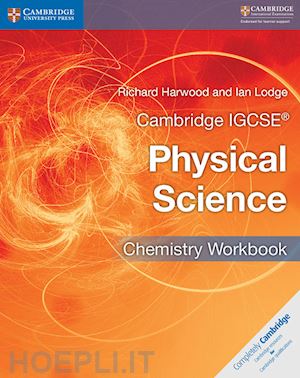Introduction; How to use this book; C1. The particulate nature of matter; C1.1 Changing physical state; C1.2 Plotting a cooling curve; C2. Experimental techniques; C2.1 Diffusion, solubility and separation; C2.2 Chromatography at the races; C3. Atoms, elements and compounds; C3.1 Atomic structure; C3.2 The first four periods; C3.3 The chemical bonding in simple molecules; C3.4 The nature of ionic lattices; C4. Stoichiometry; C4.1 Formulae of ionic compounds; C4.2 Making magnesium oxide – a quantitative investigation; C4.3 The analysis of titration results; C4.4 Calculating formula masses; C4.5 A sense of proportion in chemistry; C4.6 Finding the mass of 5 cm of magnesium ribbon; C4.7 Reacting volumes of gases; C5. Electricity and chemistry; C5.1 The nature of electrolysis; C5.2 Making and 'breaking' copper chloride; C6. Energy changes in chemical reactions; C6.1 Energy diagrams; C6.2 The collision theory of reaction rates; C6.3 The influence of surface area on the rate of reaction; C6.4 Finding the rate of a reaction producing a gas; C7. Acids, bases and salts; C7.1 Acid and base reactions – neutralisation; C7.2 Types of salt; C7.3 Descaling a coffee machine; C7.4 Thermochemistry – investigating the neutralisation of an acid by an alkali; C8. The Periodic Table; C8.1 Trends in the halogens; C8.2 Displacement reactions of the halogens; C8.3 Group I: The alkali metals; C9. Metals; C9.1 The reactivity series of metals; C9.2 Energy from displacement reactions; C9.3 Metals and alloys; C10. Air and water; C10.1 Atmospheric pollution, industry and transport; C10.2 Clean water is crucial; C11. Organic chemistry; C11.1 Families of hydrocarbons; C11.2 Unsaturated hydrocarbons (the alkenes); C11.3 The alcohols as fuels; C11.4 Essential processes of the petrochemical industry; C11.5 Addition polymerisation; C12. Analysis; C12.1 Titration analysis; C12.2 Chemical analysis; C12.3 Planning a controlled experiment; C12.4 Chemical testing and evaluation; C12.5 Experimental design; Answers.











